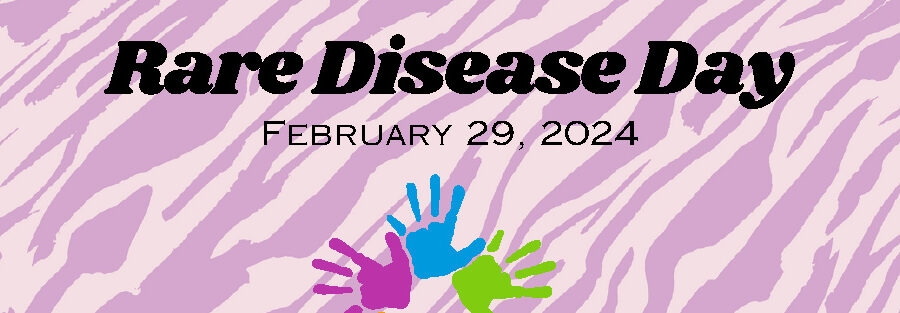by genetic counseling students Isabel Bullock and Karli Workman
What is Rare Disease Day?
Rare Disease Day is recognized on the last day of February each year. This year is particularly special since February 29th only comes around once every four years. Since it is the rarest day of the year, it is also the perfect day to raise awareness of rare diseases! Rare Disease Day is a worldwide movement whose goal is to advocate for equity in social opportunity, healthcare, and access to diagnosis and treatments for individuals living with rare diseases.
What is a rare disease?
A condition is considered rare when it affects less than 1 in 2,000 people, though some rare diseases affect as few as 1 in 5,000 or 1 in 10,000. Rare diseases are collectively common, affecting approximately 7-8% of the U.S. population and 3.5-5.9% of the global population, with most people receiving a diagnosis in childhood. There are over 7,000 known rare diseases, affecting around 30 million people in the United States alone and over 300 million people globally. However, due to the high number of rare diseases, few people share the same diagnosis, making them individually rare conditions.
What makes the rare disease community unique?
Rare diseases affect individuals typically starting early in childhood which not only impacts the patients, but also their families. Because rare diseases often require complex care, do not have effective or widely accessible treatments, and affect multiple areas of the body, families and individuals affected by rare disease experience unique physical and psychological effects.
Due to a lack of scientific knowledge and quality of information on these diseases, there is often a delay in diagnosis. Additionally, because of the broad spectrum of disorders and symptoms, rare diseases can often be initially misdiagnosed. Even individuals who have the same disease may have different symptoms, which further shows the complexity and difficulty of making a rare disease diagnosis.
Why Should You Care?
People with rare diseases often face difficulties finding or accessing the proper care and treatment they need for their condition. Providers are not always familiar with a condition or how to effectively treat a patient with that condition. 95% of rare diseases do not have an FDA-approved treatment or medication. Sharing support and raising awareness of rare diseases helps those with rare conditions to access social opportunities, healthcare, diagnoses, and therapies or treatments.
How Can You Spread Awareness?
Show your stripes!
Zebras are a symbol for rare diseases in the United States, so on February 29th, wear a striped shirt and post a picture to social media with the hashtags #RareDiseaseDay and #ShowYourStripes to show your support and raise awareness!
#LIGHTUPFORRARE
You are invited to light or decorate your home with Rare Disease Day Colors at 7 PM your local time on February 29, 2024. Let your creativity shine and share it on social media using the Rare Disease Day’s “Global Chain of Light” filters and #RareDiseaseDay.
Share Your Colors
Use Rare Disease Day’s Instagram filters to post on social media showing your support for the rare disease community and sparking conversations about rare diseases.
Here of some other resources on how to show your support, get involved, and be more educated about rare disease:
